| |
|
|
|
| |
|
|
|
| |
10 melhores Peças da música Clássica
|
|
|
| |
Por séculos, eles foram tocar a emoção das pessoas e dos sentidos e seus efeitos, sem dúvida, farol profundamente no futuro.
Nós estamos contentes de apresentar-lhe uma lista de oeuvres chef de herança clássica. Esta é uma lista dos Top’s 10, ou melhor, peças mais conhecidas de compositores clássicos. Não significa uma escala de graduação, como em uma lista hit pop de música MTV.
Ele simplesmente não é possível comparar essas composições com os outros - eles são tão únicos e exclusivos em sua essência que cada um deles poderia campeão lista.
Abaixo você encontrará as composições próprias e suas descrições, já que não há nenhuma maneira de compreender e apreciar obras clássicas sem conhecer a pré-história.
Você também vai encontrar gravações de vídeo de cada peça executada por alguns dos músicos mais proeminentes, e, claro, a partitura de alta qualidade para que você possa dominar cada nota.
Além de toda a dúvida, para incluir essas obras em atesta o seu repertório para o seu gosto refinado e competência como músico. Boa sorte com a prática e deixe-a encher os vossos corações de alegria e susto!
|
|
| |
“Für Elise” by Ludwig van Beethoven
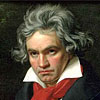
If you enter just the first two words into any search engine, you will receive over 3 million places where the famous composition is to be found. And that’s quite explainable. Also known as “Bagatelle in A Minor”, it is probably one of the most universally recognizable melodies, even to a person hearing knowing neither its name nor its composer.
Composed in 1810 at the time when Beethoven had almost turned completely deaf, this piece still conceals the mystery that’s hovering around its name. “Für Elise”, literally “For Elise”, does not reveal the personality of Beethoven’s dedication. Some say it was in fact the unintelligibly written ‘Therese’ on the composer’s manuscript – Therese Malfatti, whom he wanted to marry but was turned down. According to other sources, it could have been the nickname of Elisabeth Röckel, an opera singer and Beethoven’s close friend.
But either this or that, Für Elise keeps exciting minds of millions, regardless of who inspired the great composer for its creation.
Beethoven’s “Für Elise” Free Sheet Music
1
“Wedding March” by Felix Mendelssohn
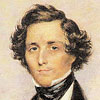
None of the wedding marches ever composed has been played for 150 years in a row at virtually every wedding ceremony including many royal events. Mendelssohn has left an imprint in the history this way for sure.
The first bride who came to the altar under the sounds of this march was no other than Queen Victoria’s child princess Victoria Adelaide Mary Louise in 1858 to say ‘yes’ to her bridegroom Frederick William IV of Prussia.
Obviously that was not the main purport of the young master – Mendelssohn adored Shakespeare’s play “A Midsummer Night’s dream” and planned to write music to it when he was still 17. Besides the wedding popularity, this piece is also considered to be one of the masterworks of all time.
Mendelssohn’s “Wedding March” Free Sheet Music
2
“Ave Maria” by Franz Schubert
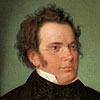
In reality 28-year-old Schubert had not intention to compose this deeply reverent and devotional piece on church’s order. The well-known Latin “Ave Maria” prayer inspired some unknown musician to add its text to the composer’s music scores long after the music emerged.
Initially Franz Schubert composed to an excerpt from Sir Walter Scott’s “The Lady of the Lake” poem. Originally titled as “Ellen’s third song”, the piece reflects the poem heroine praying for help to Virgin Maria.
Such was the success of what the piece had become with the new lyrics that the author himself was overwhelmed by sincere surprise and a flow of emotions. Unfortunately, he had only 3 years left to rejoice the success - Schubert dies at an early age of 31.
Schubert’s “Ave Maria” Free Sheet Music
3
“Moonlight Sonata” by Ludwig van Beethoven

The sunny Hungarian summer of 1801 gave birth to another music work by Beethoven that would become world-famous. Today the name of “Moonlight Sonata” resides in the memory of many.
Originally called “Almost a Fantasy” or rather “Piano Sonata No.14 in C sharp minor”, it was a dedication to the composer’s young pupil Countess Giulietta Gucciardi, who he was deep in love with back then. Unfortunately, a marriage was refused by the countess’ parents.
However, it doesn’t explain the piece’s name, does it. The moonlight that appears in the title was the one seen by the poet Ludwig Rellstab over the Swiss lake Lucerne. With time it stuck firmly to the melody and ‘unofficially’ remained like that till present time.
The work was published in Vienna in 1802.
Beethoven’s “Moonlight Sonata” Mov.I, Free Sheet Music
4
“Morning Mood” by Edvard Grieg

Being the first part of the famous Peer Gynt Suite No. 1 Op. 46, “Morning Mood” or “Morgenstemning” has been often heard as the background music in numerous commercials and even cartoons like The Simpsons.
The reason why it has became so widely loved and thus commonly used is because this is considered to be one of the best and most sensual, passionate and emotional reflections of a new day breaking that has ever been composed.
“Morning mood”is likely to be Grieg’s best-known work.
Grieg’s “Morning Mood” Free Sheet Music
5
“Rondo Alla Turca” by Wolfgang Amadeus Mozart
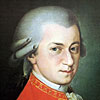
Probably better known as “Turkish March”, this piece stands out in Mozart’s unsurpassed treasure repertoire.
It was composed most likely around 1783 and is actually not a separate piece but represents the third and last movement of Mozart’s Piano Sonata No. 11.
The reason why it was called ‘Turkish march’ lies in the similar sound of Turkish Janissary bands. Like all military march music, it is characterized by immensely powerful percussions, which were quite popular not only in the 17th century but in modern Turkey as well.
Mozart’s “Rondo Alla Turca” Free Sheet Music
6
“Fantaisie-Impromptu” by Frédéric Chopin
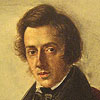
As you have probably noticed, almost every great classical piece was dedicated to something or mostly someone special. This fantasy is no exception. The master of romantic music Frédéric Chopin decided to dedicate this piece to his close friend Julian Fontana. And exactly Fontana was the one to take care of it after Chopin’s death and published it in 1855, disobeying his friend’s instructions, who prohibited any publication of the piece.
There was a specific reason why Chopin so objected to this work to be heard in public. Some time after writing it and giving it a closer reflection he realized that it reminded of both Moscheles’s “Impromptu” and Beethoven’s “Moonlight Sonata”. And being accused of plagiarism would have been one of the worst things for a 24-year-old composer of such a rank.
Chopin’s “Fantasie-impromptu” Free Sheet Music
7
“Clair de Lune” by Claude Debussy
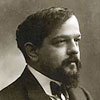
Poetry lovers will first of all recognize Paul Verlaine’s poem in the name of this composition. And so it was – a tone poem as a result of the prodigy composer being inspired by the lines of the French poet.
The title being French for ‘moonlight’, this is an exceptionally soft and touching melody – a perfect example of a piece speaking precisely to the soul, never to the mind, which was the essence of the avant garde idea that influenced Debussy’s style at that time.
“Clair de Lune” (or “Promenade Sentimentale”) enjoyed such an impressive success that the number of movies it was featured in reaches 120, Ocean’s Eleven and Twilight among them.
Debussy’s “Clair de Lune” Free Sheet Music
8
“The Flight of the Bumblebee” by Nikolai Rimsky-Korsakov
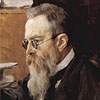
As a child Rimsky-Korsakov adored everything related to Russian folk. So this piece draws its inspiration from a Russian fairy-tale “Tsar Sultan”.
According to the plot a prince who had never met his father before makes a few attempts to visit him and for this purpose turns into various animals, the last of which is a bumblebee. The melody of the composition depicts the bumblebee’s escape flight. Amazing how vivid and virtuous the imitation of the insect’s sounds is.
Rimsky-Korsakov’s “The Flight of the Bumblebee” Free Sheet Music
9
“Le cygnet” by Camille Saint-Saiëns
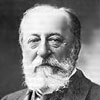
Last but not least on our list, this masterpiece saw the world when Saint-Saiëns was already 51 years old. We know it better as “The Dying Swan” and usually envision it with Maya Plisetskaya’s famous last dance of a swan resisting death.
The piece is in fact a part of an entire musical suite “The Carnaval of the Animals”. Interesting but it is the only movement, which the composer allowed to be performed publicly while he was alive. The rest he considered as too flippant and devoid of depth for a serious composer.
This music interprets the ancient Greek legend according to which a silent and beautiful swan bird sings only once in its lifetime – when it’s dying.
Saint-Saiëns’s “The Dying Swan” Free Sheet Music
10
|
|
| |
 Сергей 22 abr, 08:50
Сергей 22 abr, 08:50
К Элизе и Турецкое рондо особенно мои любимые.
 Костя Новгородский 11 mai, 10:49
Костя Новгородский 11 mai, 10:49
Полагаю, что ни один музыкант не согласится с предложенным топом, поскольку у каждого есть что-то родное, любимое. Так же замечу, что чем больше ты ведешь раскопок в этом гигантском пласте музыкального мира, тем больше произведений из этого списка хочется заменить на иные.
Я, пожалуй, готов согласиться лишь с парой представленных композиций
 Lena Orsa 11 jun, 11:45
Lena Orsa 11 jun, 11:45
...and Prokofiev's "Dance of the Knights", as well as J.S. Bach's "Joke" from Orchestral Suite No.2 in b minor.
 Richard Baught 25 nov, 09:30
Richard Baught 25 nov, 09:30
A ready 'starter-pack' for those who are beginning their classical music journey.
 Владимир Полионный 07 mar, 12:01
Владимир Полионный 07 mar, 12:01
Соната №14 Бетховена ор.27 №2 была издана в марте 1802г. а не после смерти композитора( как указанно в аннотации), который умер в 1827 году.
|
|
|
| |
|
|
|